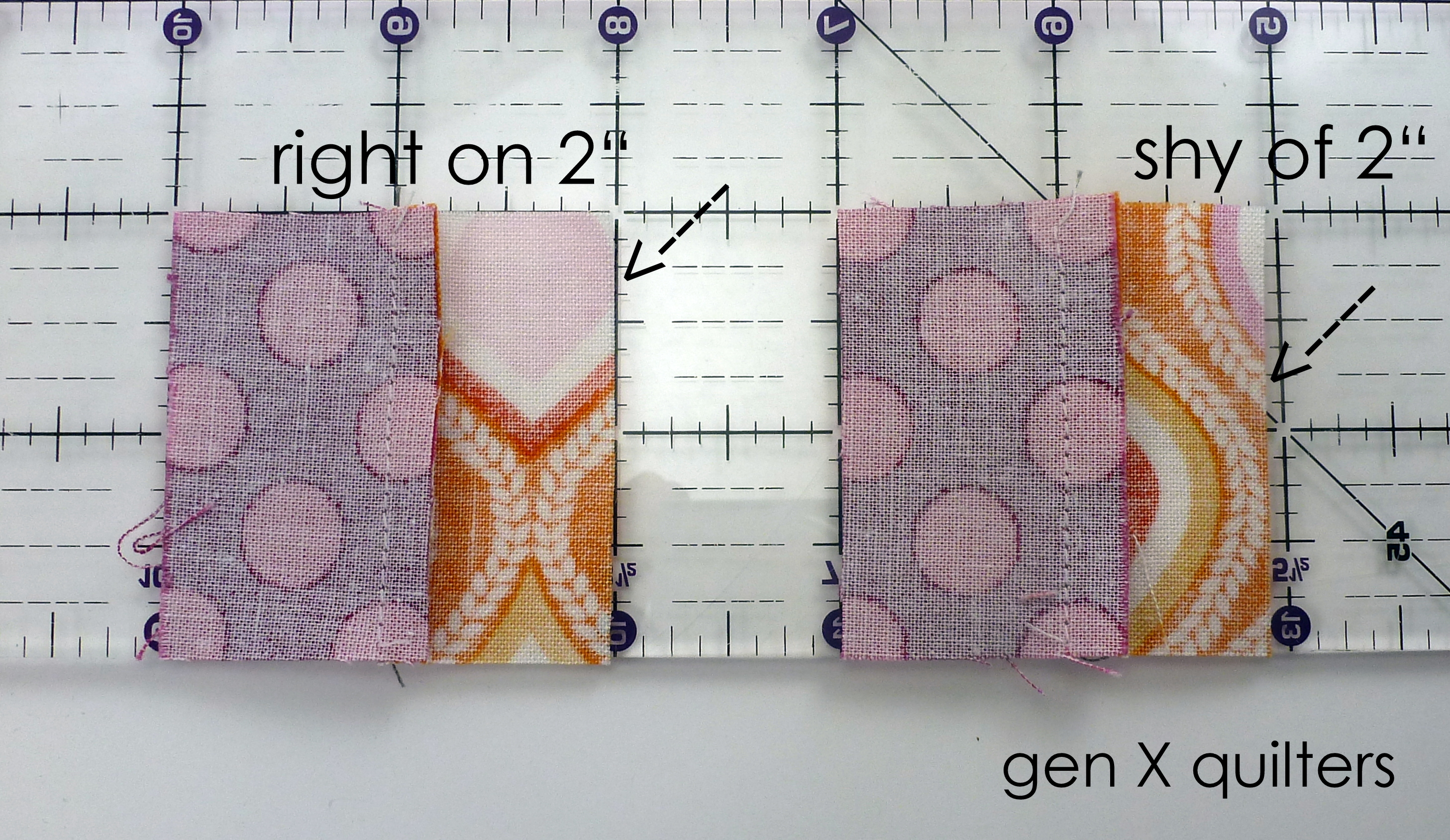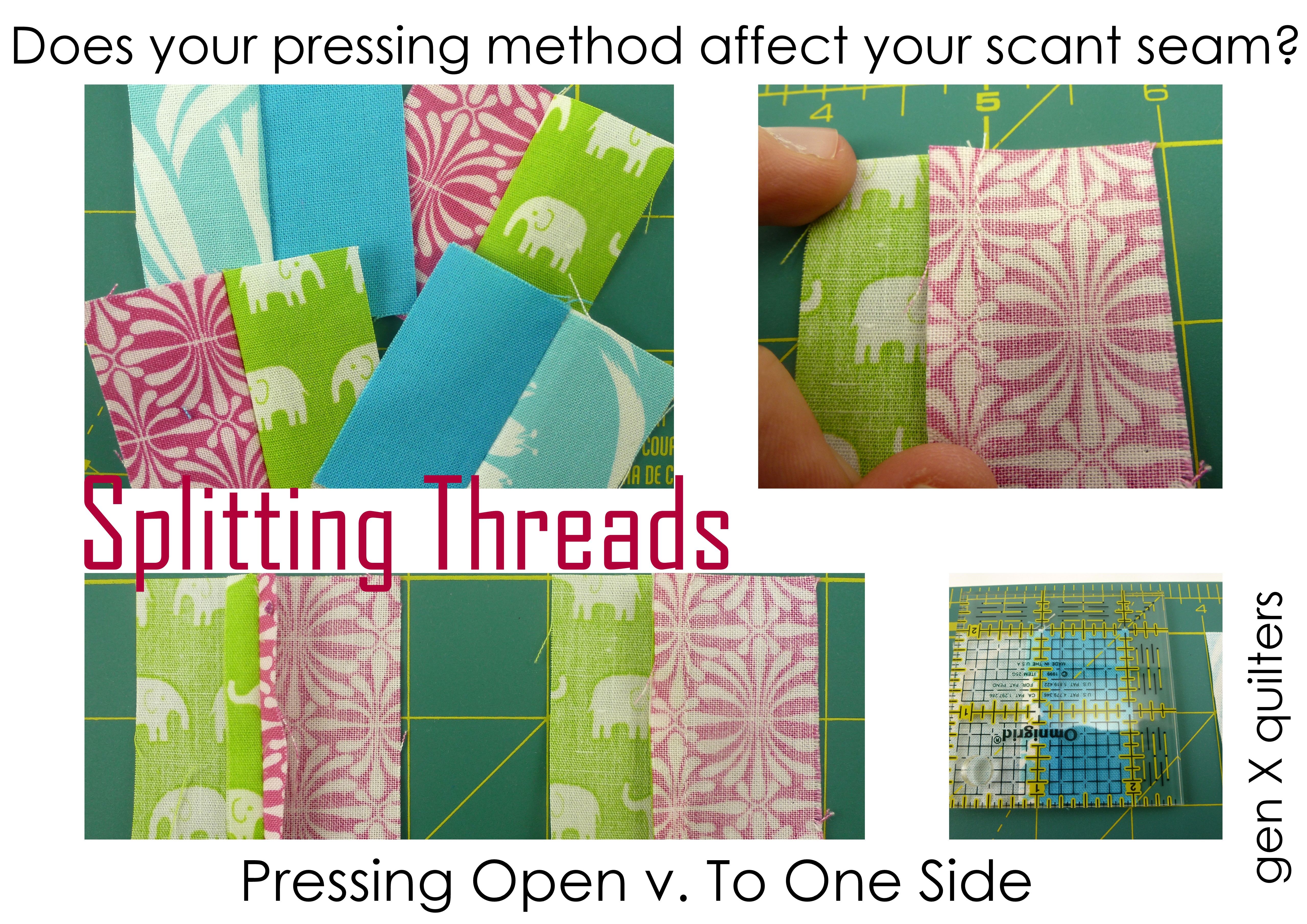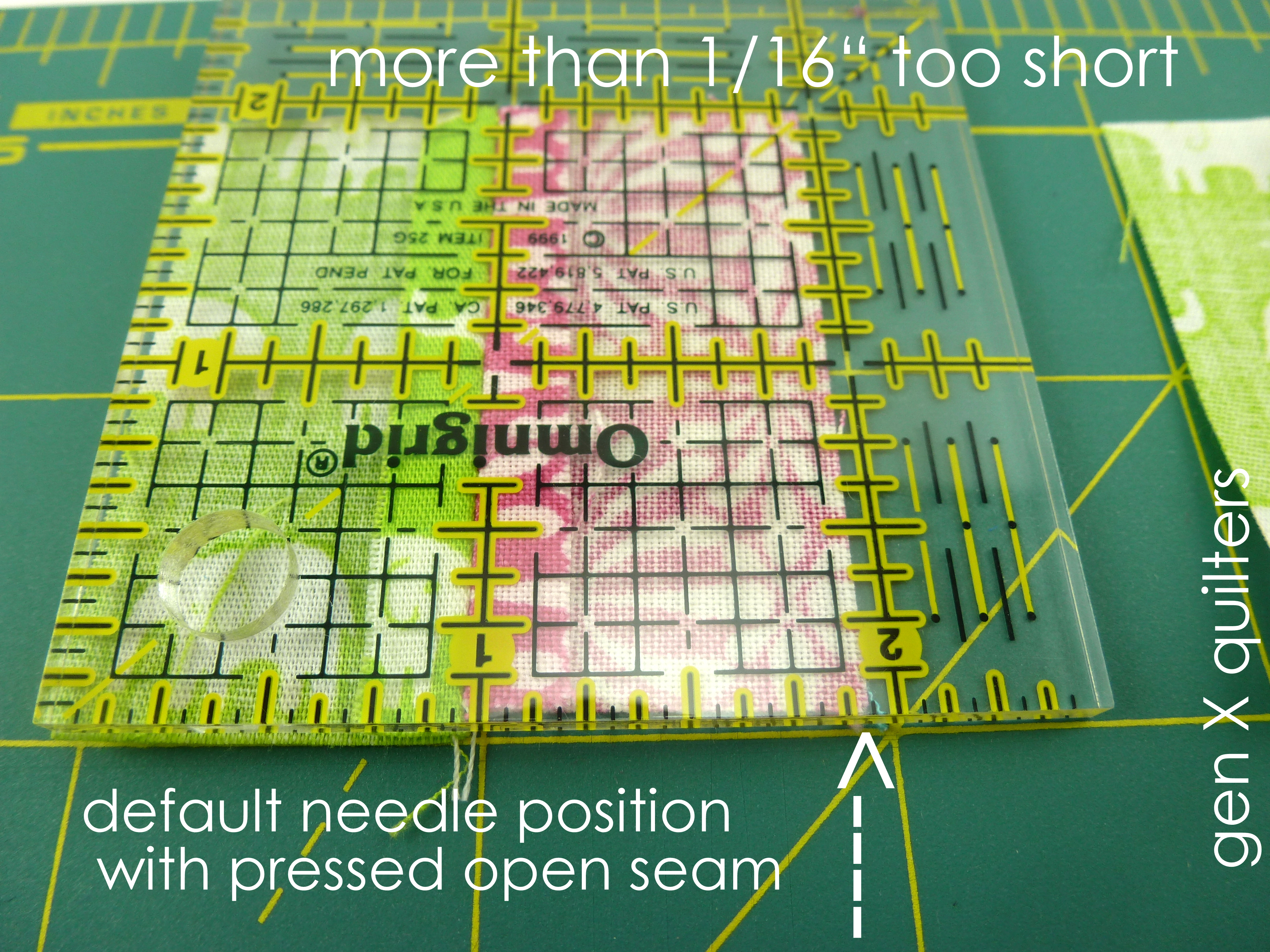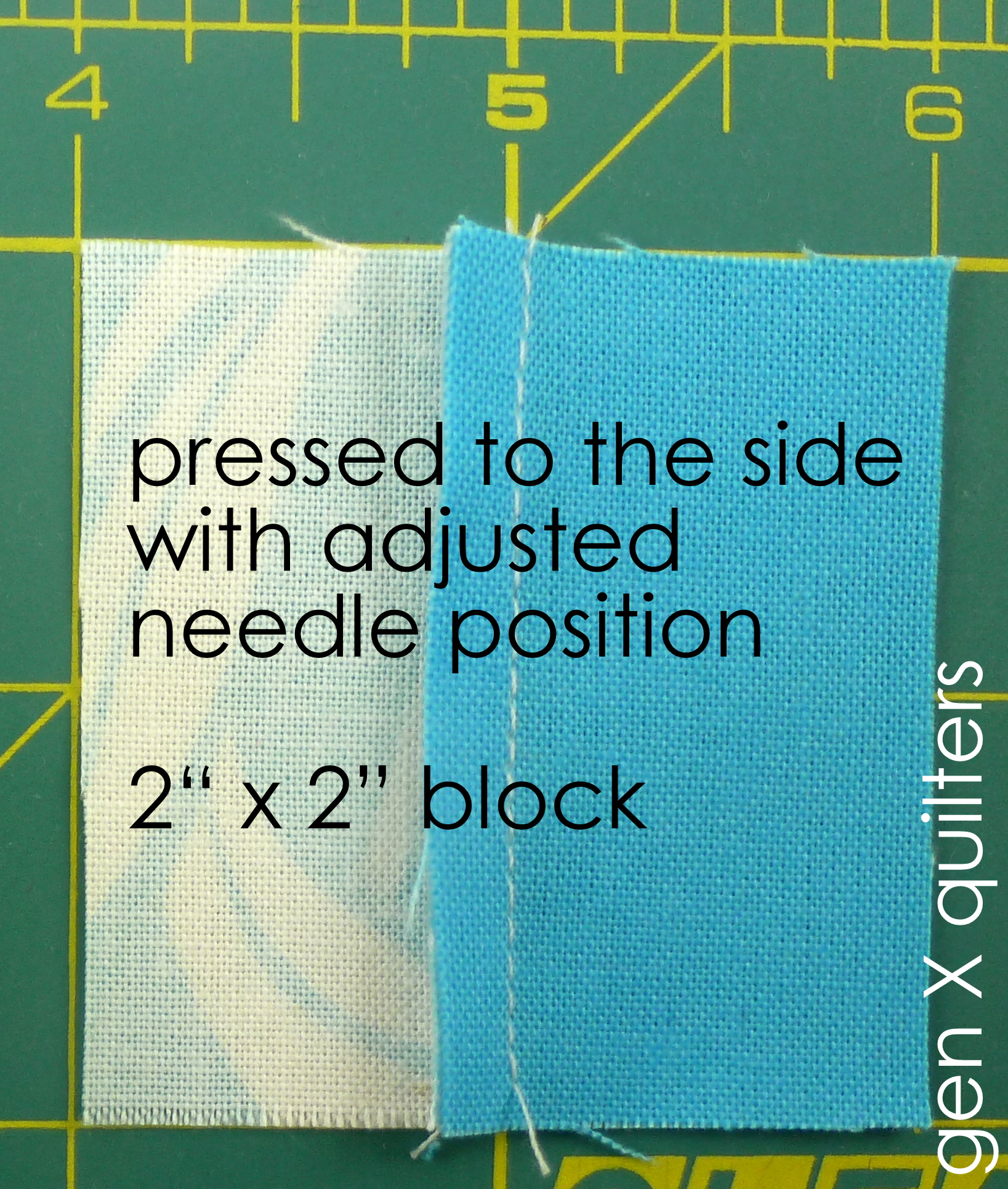This is a continuation of the
Scant Rant: 1/4" Seam Tutorial from earlier this week.
Jess of the Elven Garden raised an excellent point in the comments. From her experience, blocks were always a little off until she started pressing her seams open. And since scant seams account for thread thickness and the fold, I thought I'd play Scooby Doo Detective.
Does it make a difference if you press your seams open or to the side in your final block measurements?? Ahh, well. The geek in me could not resist....
After digging out my only ruler with eighths and sixteenths marked on it, I cut several rectangles as I recommended in the
test for sewing a scant 1/4" seam. This time I wanted to check how pressing the seams open would influence the block size.
Here is the photo of the block using the needle in it's default position and pressing my seam open. (I normally always press to one side because I am impatient like that.) Although this is hard to photograph, I think you can see that this block is more than 1/16" too short. Doesn't sound like much, but if every block is off this much, it can add up.
My next test was to sew the same block with the needle in it's adjusted position. Now remember, I set this position by sewing my block and pressing to one side (explained
here).... It's pretty plain to see this block is too big by about 1/32" of an inch.
And again, test #3, the same block sewn with the adjusted needle position and seam pressed to the side. Again hard to photograph, but this block is more accurate to 2" x 2" than the photo above.
So who cares? Why on earth am I showing you all of this? After all, we are talking about 1/16" and 1/32" of an inch here. (I think I did mention we were going to be splitting threads right.... ha ha!)
The bottom line. It does make a small difference. That can add up if you are sewing lots of blocks together in, for example, a postage stamp quilt. Here's my recommendation: find your scant 1/4" needle position using the pressing method you use most. Or if you're into superhero precision, determine your needle position for both.
As for me, I'm no superhero.
One more note. Kati pointed out that not all 1/4" presser feet have space to reposition your needle. Make a mental note to check that when you are selecting one for your machine.
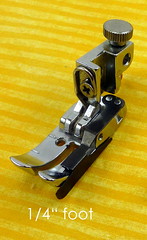
My Janome 1/4" foot

has room to shift the needle to the right.
This Brother 1/4-Inch Quilting Foot

does not appear to have much wiggle room.
Browse for other 1/4" presser feet models here

.
Thank you for your comments! I hope learning a little about this stuff helps everyone improve their accuracy just a little bit.
Further Reading.
Part I:
Scant Rant: A 1/4" Seam Tutorial for Sewing Machines with Adjustable Needle Positions
Part III:
Scant Rant: A 1/4" Seam Tutorial for Basic Sewing Machines





